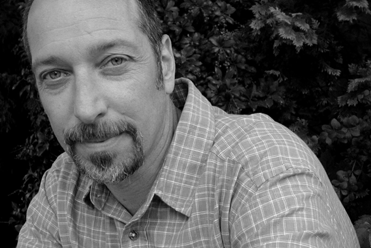
THE ASSOCIATION FOR EDUCATION IN JOURNALISM AND MASS COMMUNICATION (AEJMC) in Chicago
featured a PF&R Panel sponsored by the Entertainment Studies Interest Group and the Magazine Division on “The Image of the War Correspondent in Popular Culture,” at 11:45 a.m., Thursday, August 7, 2008.
 Moderator and Presenter is Joe Saltzman, professor of journalism and director of the IJPC premiered a 14-minute preview of a new IJPC Video, “The Image of the War Correspondent in Movies and TV.” Saltzman told the AEJMC audience, “The undisputed journalist hero is the war correspondent. During the 1940s, the war correspondent became a national folk hero. Popular actors couldn’t wait to play the glamorous overseas war reporter who would save the day, his loved one and his country in less than a couple of hours. Some war correspondents were a variation on the oldest stereotype in newspaper films – the crime reporter. During dangerous times abroad, they were working on a larger canvas, but still solving the crime without official help or guidance. When there weren’t any conflicts, the foreign correspondent movies were a lot less dramatic. The war correspondent was the perfect movie hero whose daily work included patriotism, danger, violence and drama. They were where the action was and a whole nation held its breath while they risked their lives overseas to get the story back to the home front. Issues of distorting the truth in times of war and censorship were sometimes touched upon in the movies, but when bullets were flying and lives were in jeopardy, those were nuances the American moviemakers and the American movie-goers weren’t much interested in. Kill the enemy and save our boys no matter what it takes – and if that meant journalists who practiced jingoism and racism, that was a price everyone seemed willing to pay. Many war correspondents died on the battlefield or trying to get a story out of enemy territory. With Iraq in daily headlines and no end in sight, this topic seems more timely than ever.”
Moderator and Presenter is Joe Saltzman, professor of journalism and director of the IJPC premiered a 14-minute preview of a new IJPC Video, “The Image of the War Correspondent in Movies and TV.” Saltzman told the AEJMC audience, “The undisputed journalist hero is the war correspondent. During the 1940s, the war correspondent became a national folk hero. Popular actors couldn’t wait to play the glamorous overseas war reporter who would save the day, his loved one and his country in less than a couple of hours. Some war correspondents were a variation on the oldest stereotype in newspaper films – the crime reporter. During dangerous times abroad, they were working on a larger canvas, but still solving the crime without official help or guidance. When there weren’t any conflicts, the foreign correspondent movies were a lot less dramatic. The war correspondent was the perfect movie hero whose daily work included patriotism, danger, violence and drama. They were where the action was and a whole nation held its breath while they risked their lives overseas to get the story back to the home front. Issues of distorting the truth in times of war and censorship were sometimes touched upon in the movies, but when bullets were flying and lives were in jeopardy, those were nuances the American moviemakers and the American movie-goers weren’t much interested in. Kill the enemy and save our boys no matter what it takes – and if that meant journalists who practiced jingoism and racism, that was a price everyone seemed willing to pay. Many war correspondents died on the battlefield or trying to get a story out of enemy territory. With Iraq in daily headlines and no end in sight, this topic seems more timely than ever.”
The panel discussed the image of the war correspondent in movies, graphic novels and fiction. Panelists include: Matthew Ehrlich, Professor, University of Illinois who spoke on “War, Myth and Ernie Pyle in
Matthew Ehrlich, Professor, University of Illinois who spoke on “War, Myth and Ernie Pyle in
“The Story of G.I. Joe.”
Ehrlich: “The 1945 film "The Story of G.I. Joe" has been called one of the most moving cinematic portrayals of the war correspondent. The film is based upon the World War II dispatches of
Ernie Pyle, arguably the most beloved war correspondent of all time. However, Pyle also has been criticized as presenting an overly noble and sentimental view of the American soldier.
This presentation compares the depiction of the Pyle character in the film with the real-life Pyle, and discusses how the movie mythologizes war and those who cover it in ways both good and bad.”
 Howard Good, Professor, New Paltz University, SUNY spoke on “History’s Losers: The War Correspondent in the Graphic Novel. Good: “Using the 2007 graphic novel Shooting War by Anthony Lappé and Dan Goldman as a stepping-off point, this presentation will examine the unusual way in which graphic novels, a hybrid verbal-visual form that has only recently achieved cultural status, represent the war correspondent. Although often set in a dystopian future, and featuring a twenty-something protagonist who looks as if he belongs more in a skateboard park than in a newsroom, Shooting War and similar works provide, under the guise of adolescent entertainment, critical commentary on current events, particularly the American response to 9/11, including the invasion of Iraq, the torture of suspected terrorists, and the passage of the repressive Patriot Act. The novels suggest through the disillusioning experiences of their protagonists that big media have failed – largely out of an obscene craving for profit -- to serve as a check on government abuse of power. In questioning government policies, and the social institutions that support and enforce them, the novels themselves assume the adversarial stance toward power and authority that was once thought to define the essence of the American press.”
Howard Good, Professor, New Paltz University, SUNY spoke on “History’s Losers: The War Correspondent in the Graphic Novel. Good: “Using the 2007 graphic novel Shooting War by Anthony Lappé and Dan Goldman as a stepping-off point, this presentation will examine the unusual way in which graphic novels, a hybrid verbal-visual form that has only recently achieved cultural status, represent the war correspondent. Although often set in a dystopian future, and featuring a twenty-something protagonist who looks as if he belongs more in a skateboard park than in a newsroom, Shooting War and similar works provide, under the guise of adolescent entertainment, critical commentary on current events, particularly the American response to 9/11, including the invasion of Iraq, the torture of suspected terrorists, and the passage of the repressive Patriot Act. The novels suggest through the disillusioning experiences of their protagonists that big media have failed – largely out of an obscene craving for profit -- to serve as a check on government abuse of power. In questioning government policies, and the social institutions that support and enforce them, the novels themselves assume the adversarial stance toward power and authority that was once thought to define the essence of the American press.” Norma Green, Professor, Columbia College, Chicago spoke on “The Portrayal of Women Journalists in War Zones from World War II to the Present.”
Norma Green, Professor, Columbia College, Chicago spoke on “The Portrayal of Women Journalists in War Zones from World War II to the Present.”
Green: “Reporter May Craig told the Women’s National Press Club in 1944: “The war has given women
a chance to show what they can do in the news world and they have done well.” This presentation surveys U.S. cinematic depictions of women who covered conflicts from World War II to the present.”  Sammye Johnson, Professor, Trinity University spoke on “The Female War Correspondent in Fiction: Covering Cold Wars, Hot Battles and Covert Operations Around the World.”
Sammye Johnson, Professor, Trinity University spoke on “The Female War Correspondent in Fiction: Covering Cold Wars, Hot Battles and Covert Operations Around the World.”
Johnson: “This presentation looks at several fictional heroines who, in their roles as reporters, face espionage and counterespionage in Europe, stress and strife in Vietnam, and murder and mayhem in Africa and Iraq. In popular novels, the female war/ foreign correspondent is almost always bright, beautiful, idealistic, and gutsy. When she's not dodging bullets or tailing suspicious diplomats, she is caught up in the throes of passion with a handsome stranger or dashing colleague. It's no wonder that readers -- mostly women -- see being a war correspondent as glamorous, exciting, and romantic."